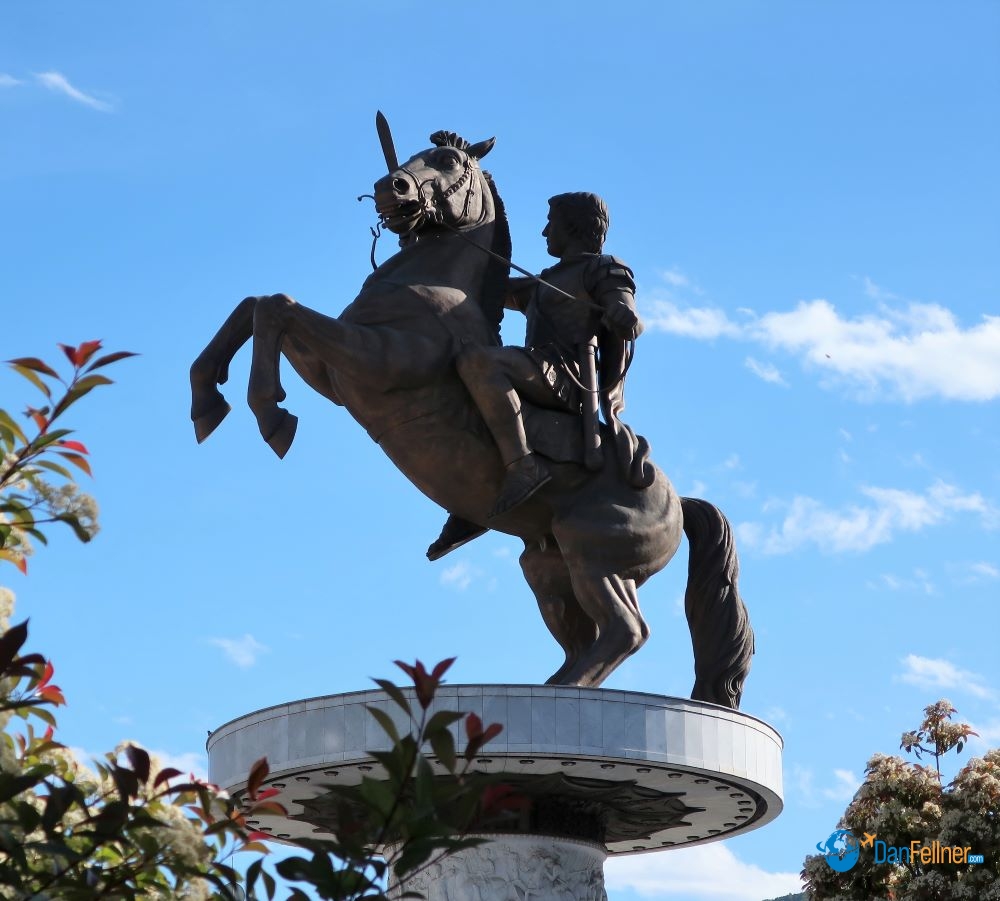‘Capital of Kitsch’ offers visitors unique and plentiful sculptures
The Arizona Republic — May 5, 2019
SKOPJE, North Macedonia – If a city’s beauty can be gauged by the number, size and sheer uniqueness of the statues it showcases, then this capital city in southeastern Europe – and Tempe’s Sister City – makes Paris, Rome and London look prosaic in comparison.
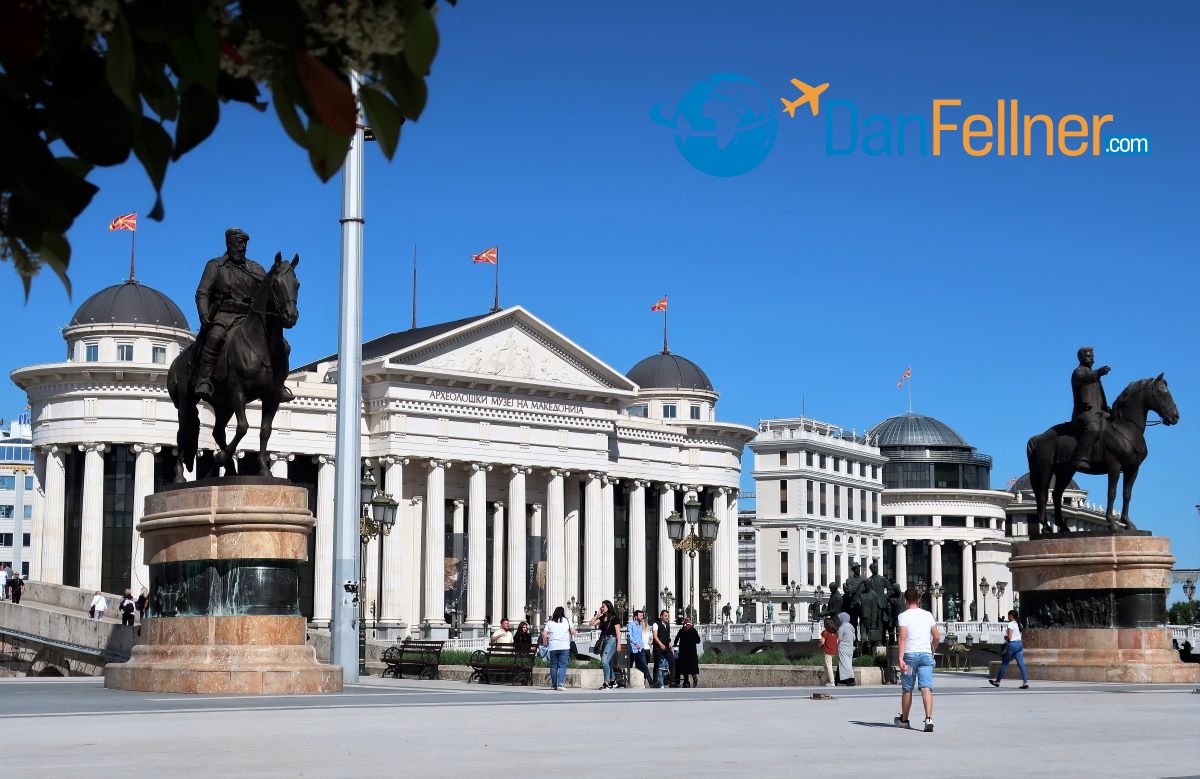
The main square — bookmarked by two huge statues — in Skopje, North Macedonia.
Walk through the heart of Skopje (pronounced Skow-pee-yeh) and you’ll see well more than 100 statues, most of which were erected in the past 10 years in a government effort to boost tourism and build national pride. The statues depict Macedonian military heroes, politicians, literary and religious figures, and people going about their daily lives.
Some of the sculptures are massive and majestic, showing courageous sword-wielding warriors perched atop regal steeds. Others are just plain over the top and quirky, earning Skopje the nickname in some circles as “the Capital of Kitsch.”
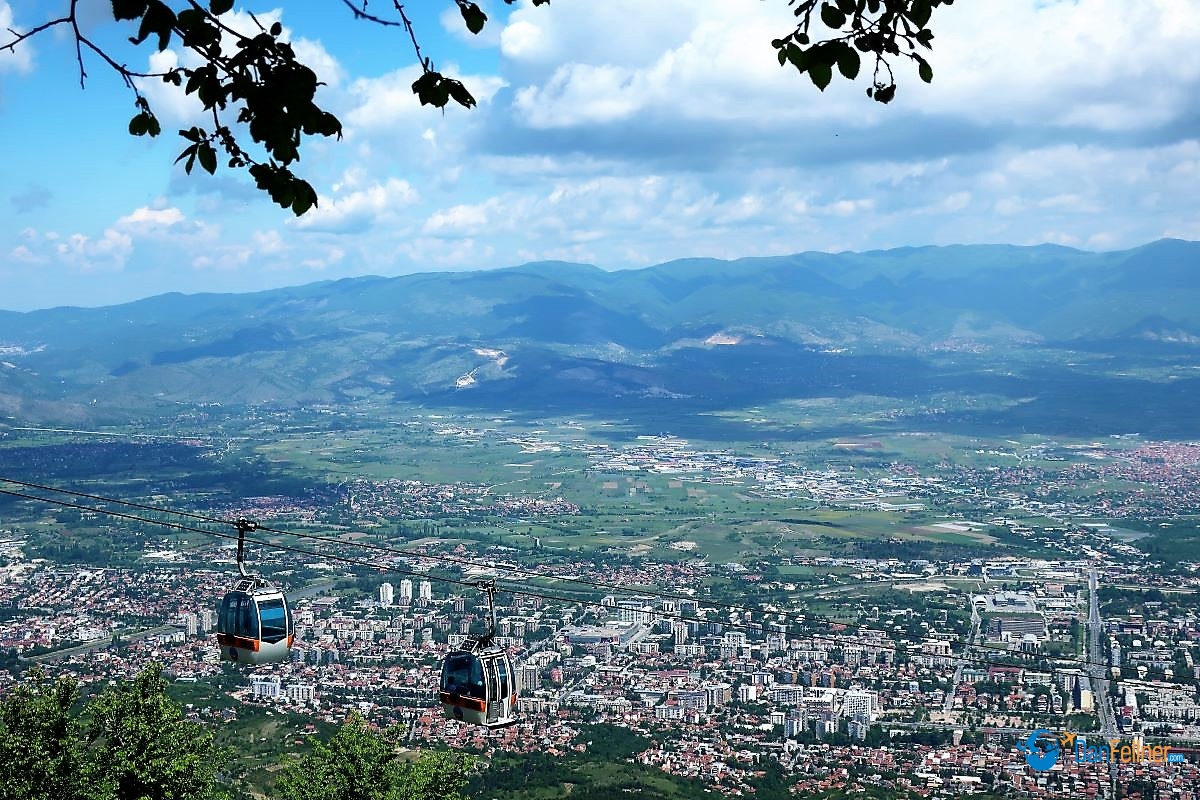
Skopje, the capital of North Macedonia, is home to about a half-million people.
The statues are part of Skopje 2014, a government-funded project that financed the construction of museums, government buildings and monuments to give the downtown a spiffy new look. Skopje, leveled by a 1963 earthquake, had long been in desperate need of a makeover.
The odd mix of statues has attracted the most attention and made the city a bonanza for selfie-shooting tourists.
Skopje, a city of about a half-million people and the capital of North Macedonia, is an eclectic blend of Christian and Islamic cultures.

The 6th-century Skopje Fortress overlooks the city.
Formerly part of socialist Yugoslavia, Skopje became Tempe’s Sister City in 1971, a groundbreaking relationship that endures nearly a half-century later. At the time, it was the first partnership between an American city and a counterpart in Eastern Europe’s socialist bloc.
As Yugoslavia was disintegrating, Macedonia gained its independence in 1991. In February 2019, the country was renamed the Republic of North Macedonia to resolve a decades-old conflict with neighboring Greece, which had previously laid claim to the name Macedonia.
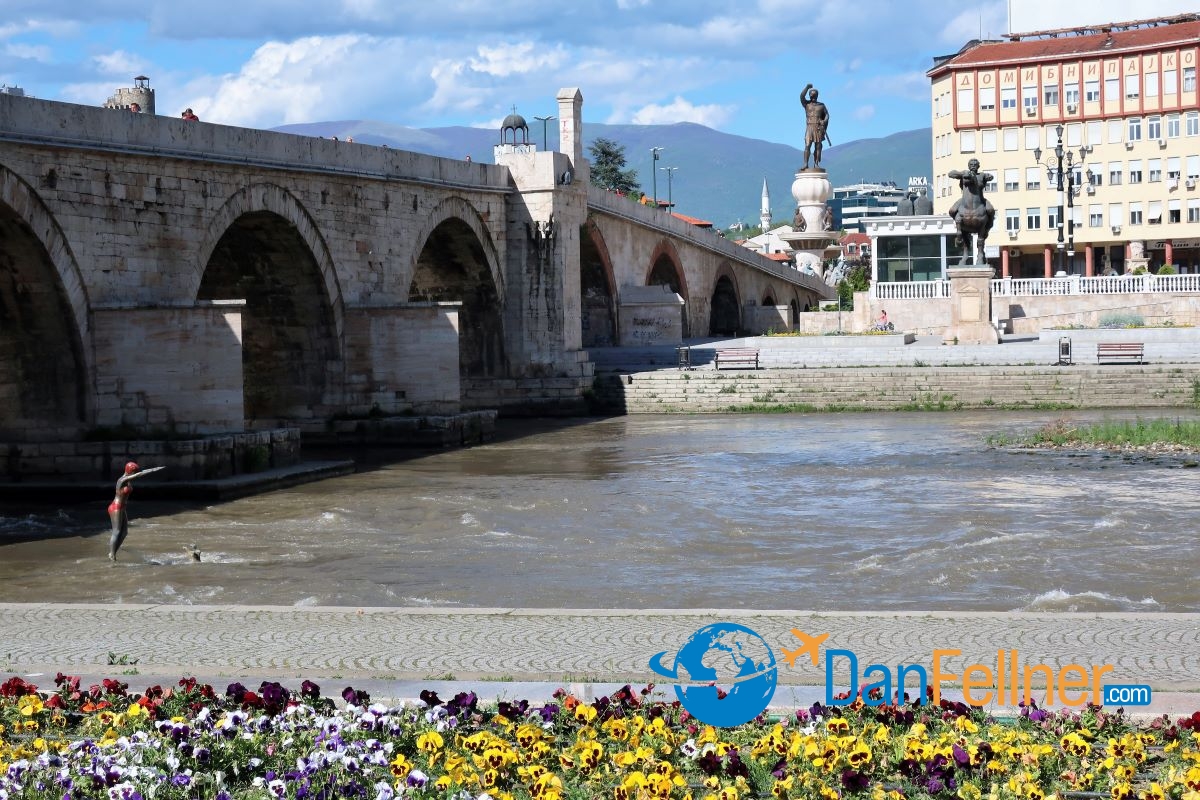
The Vardar River cuts through the heart of downtown Skopje.
In terms of its name, at least, this landlocked nation on the Balkan Peninsula is the newest country in the world. The resolution of its dispute with Greece is expected to pave the way for North Macedonia’s entry into the European Union and NATO in the coming years.
In the Balkans, where national, ethnic and religious rivalries simmer for centuries with occasional flareups, names matter.

Skopje’s most famous statue, a sculpture of Alexander the Great on his horse Bucephalus.
That’s certainly the case with Skopje’s most famous – and controversial – statue, an eight-story-tall sculpture of Alexander the Great on his horse Bucephalus. To avoid offending the Greeks, who claim Alexander as one of their own, the statue is officially named “Warrior on a Horse,” even though everyone here knows it’s really Alexander. There’s even talk of taking it down to further ease tensions with the Greeks.
On one bridge, the Bridge of Civilizations that leads pedestrians to the Archaeological Museum of Macedonia, I counted 31 statues of historical figures.
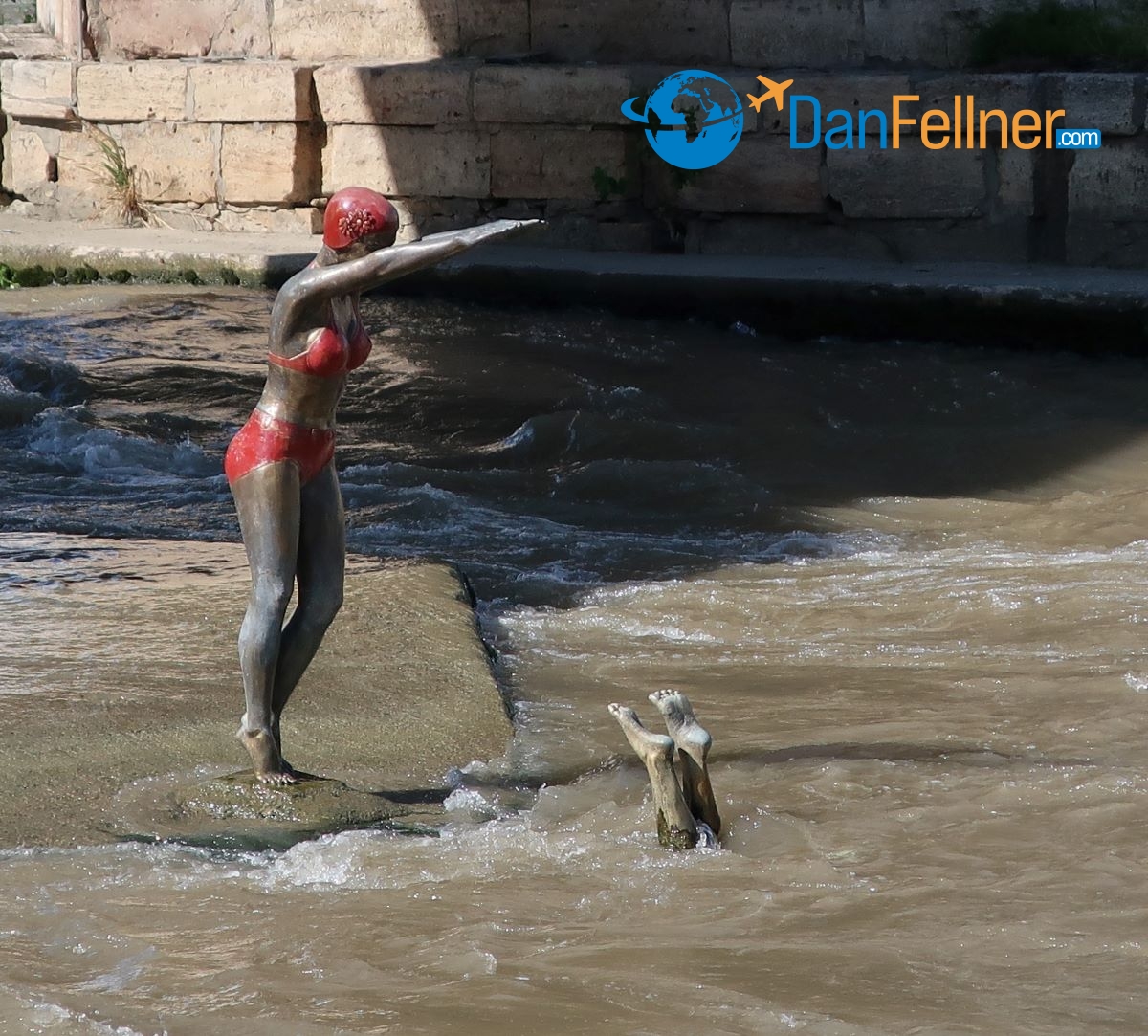
One of Skopje’s many unique statues, in which a bikini-clad woman prepares to dive into the Vardar River after another swimmer.
On the lighter side, there are whimsical statues of a shoeshine man, a beggar, a funky-looking fish and a bikini-clad swimmer about to dive into the Vardar River, under Skopje’s historic Stone Bridge. Another swimmer just a few feet ahead of her – feet protruding above the water – has already made a splash.
Just five yards from the entrance to my apartment building overlooking the city’s main pedestrian street sits a large bronze statue of a bull. It resembles the famous statue on Wall Street in New York. But the artist has said there is no connection to America or the stock market; the bull symbolizes the strength and fertility of the Macedonian people.
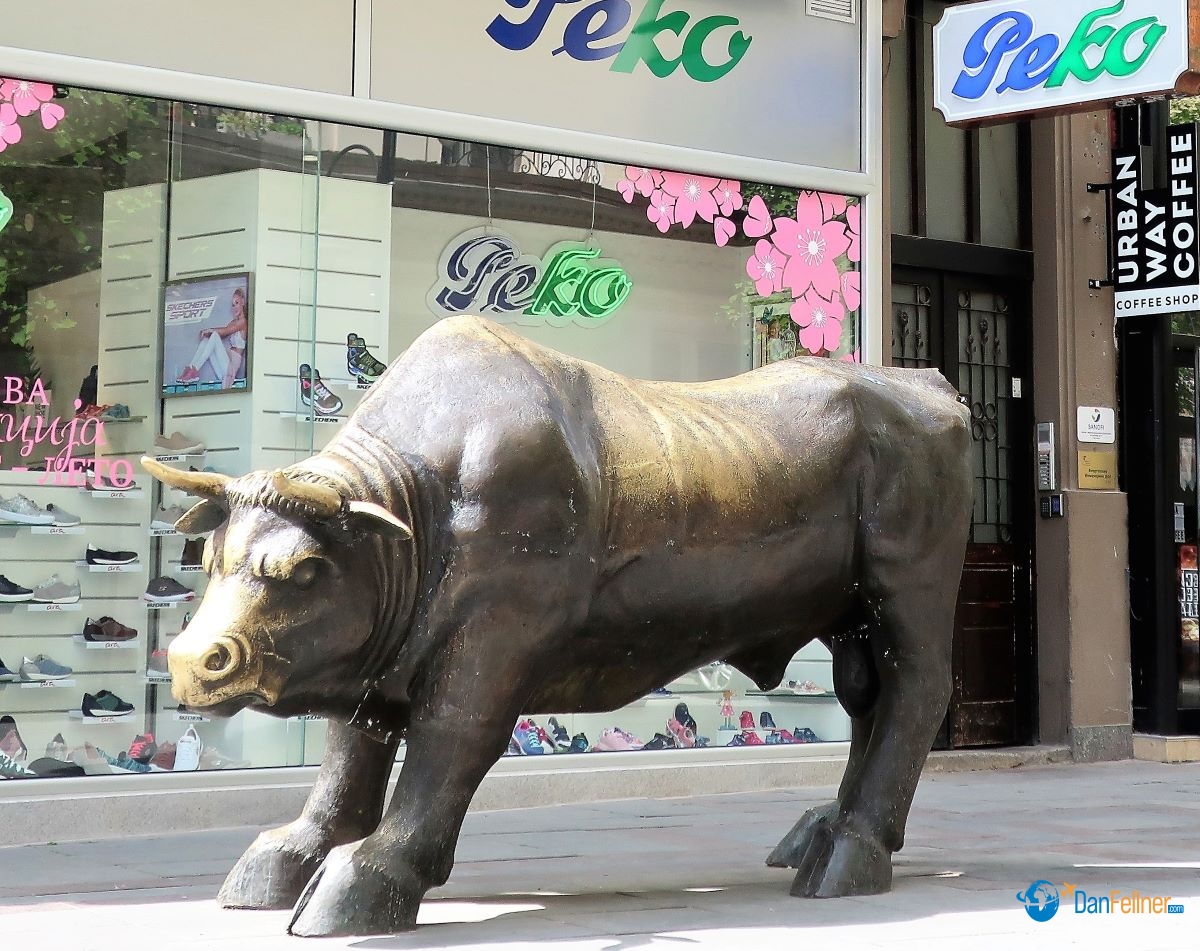
A statue of a bronze bull in downtown Skopje, said to symbolize the strength and fertility of the Macedonian people.
The bronze bull was installed 10 years ago. Somewhere along the line, someone chopped off the beast’s tail. Nevertheless, the statue is a useful landmark for me to find my apartment building after dark, in case my senses are dulled by a bit too much Skopsko, the country’s most popular beer.
Skopje 2014 cost an estimated $700 million, a large chunk of change in one of Europe’s poorest countries. Many Macedonians feel the money should have been spent on education, infrastructure and feeding the poor, instead of on monuments and statues.
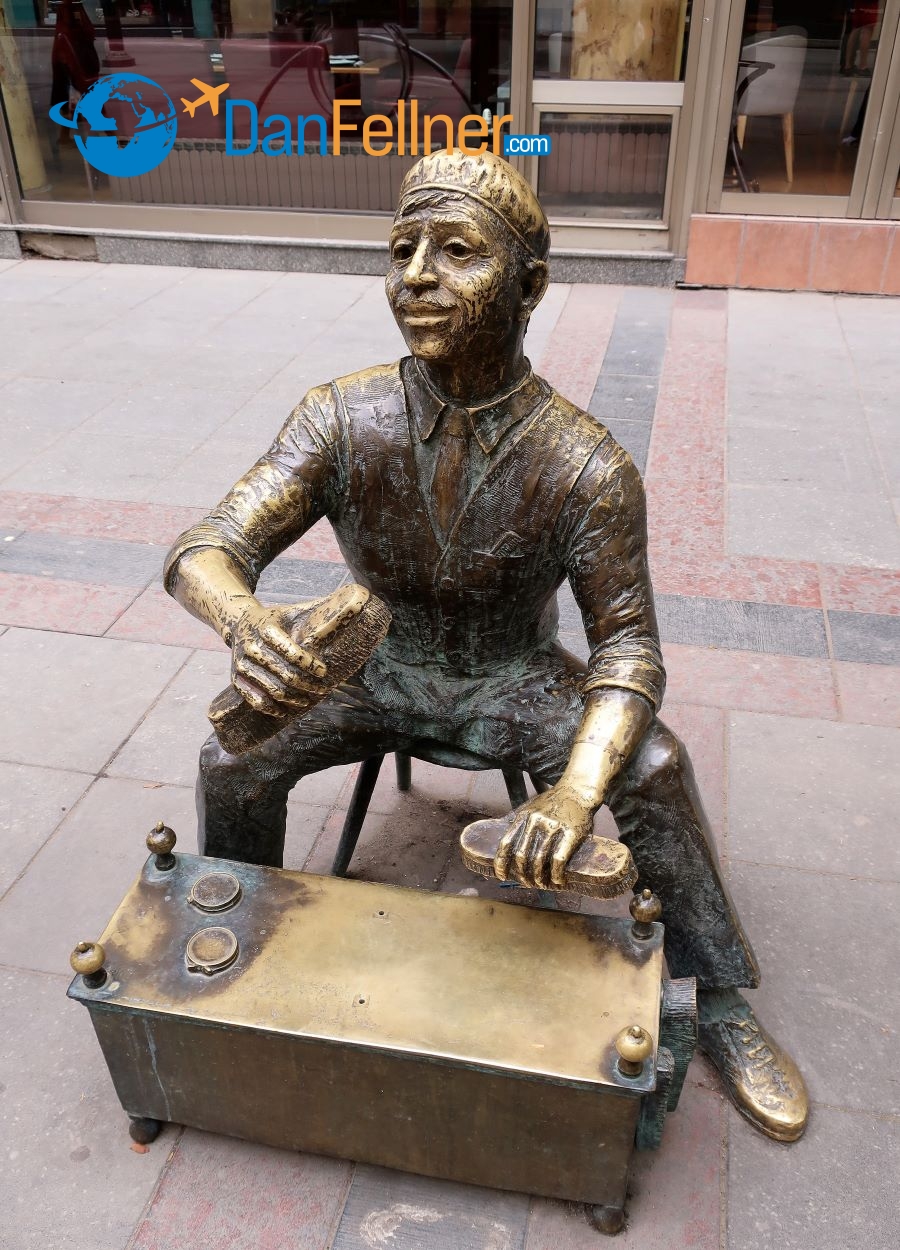
A statue of a shoeshine man in downtown Skopje.
“No, it was definitely not worth the money,” says Emilija S. Georgievska, an associate professor in the Department of English Language & Literature at Saints Cyril and Methodius University, the country’s largest university. Georgievska spent a semester at Arizona State University in 2001 in an exchange program between the two universities. “Most people do not even know who these historical figures were and what was their legacy. Unfortunately, they cannot relate to them.”
Still, the statues offer an interesting glimpse into the art, religion, history and political divisions in this part of Eastern Europe, which is still struggling to find its economic footing in the post-Yugoslavia era.
About 50 yards from my apartment is a memorial to Skopje’s most famous native, Mother Teresa, a sainted Catholic nun who won the Nobel Peace Prize in 1979 for her humanitarian work. The ethnic Albanian was born in Skopje in 1910.
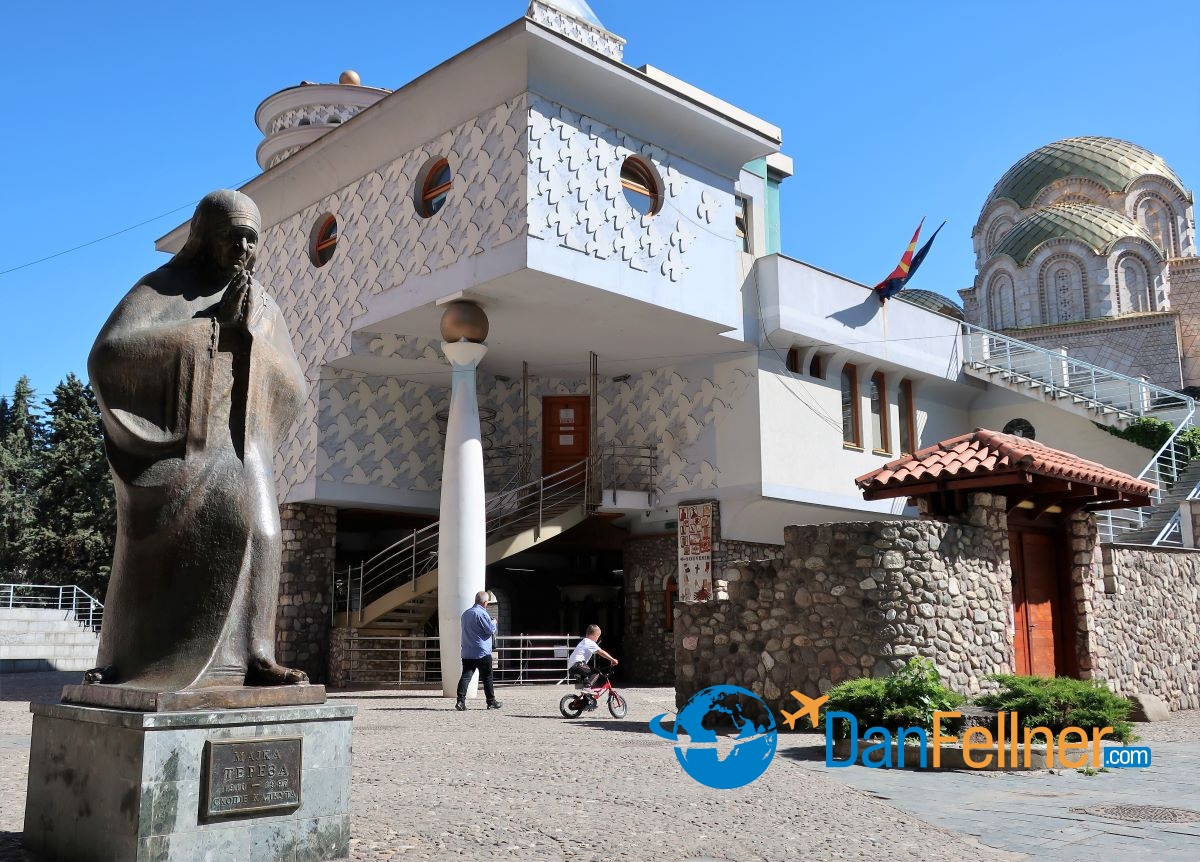
The Memorial House of Mother Teresa, a Skopje native and Catholic nun who was baptized at this site in 1910.
At the site where she was baptized as an infant now sits the 10-year-old Memorial House of Mother Teresa, which includes a small museum and Catholic chapel. The site attracts 80,000-100,000 visitors a year, including Pope Francis, who visited the site in May of 2019. There are only about 15,000 practicing Catholics in the country and it was the first time any Pope had visited North Macedonia.
Not surprisingly, there is a large statue of Mother Teresa – hands clasped in prayer – in front of the building to greet the tourists.
In Skopje, a leading attraction without a statue on the premises just wouldn’t seem proper.
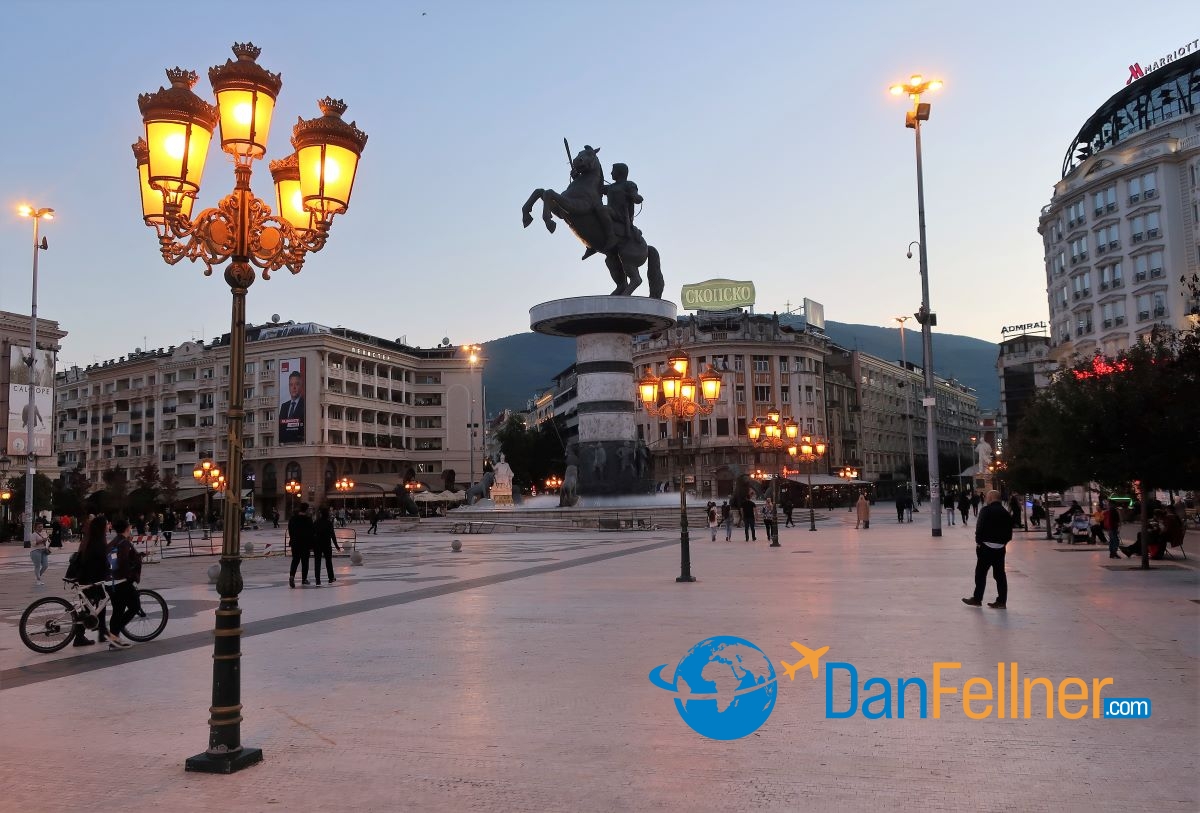
© 2019 Dan Fellner

